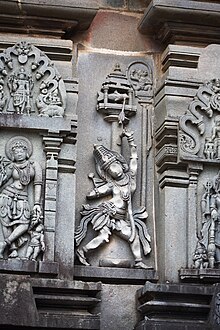Historical context
Attempts to date the events using methods of archaeoastronomy have produced, depending on which passages are chosen and how they are interpreted, estimates ranging from the late 4th to the mid 2nd millennium BCE.[25] The late 4th millennium date has a precedent in the calculation of the Kaliyuga epoch, based on planetary conjunctions, by Aryabhata (6th century). His date of February 18 3102 BCE has become widespread in Indian tradition (for example, the Aihole inscription of Pulikeshi II, dated to Saka 556 = 634 CE, claims that 3735 years have elapsed since the Bharata battle.[26]) Another traditional school of astronomers and historians, represented by Vriddha-Garga, Varahamihira (author of the Brhatsamhita) and Kalhana (author of theRajatarangini), place the Bharata war 653 years after the Kaliyuga epoch, corresponding to 2449 BCE.[27]















No comments:
Post a Comment